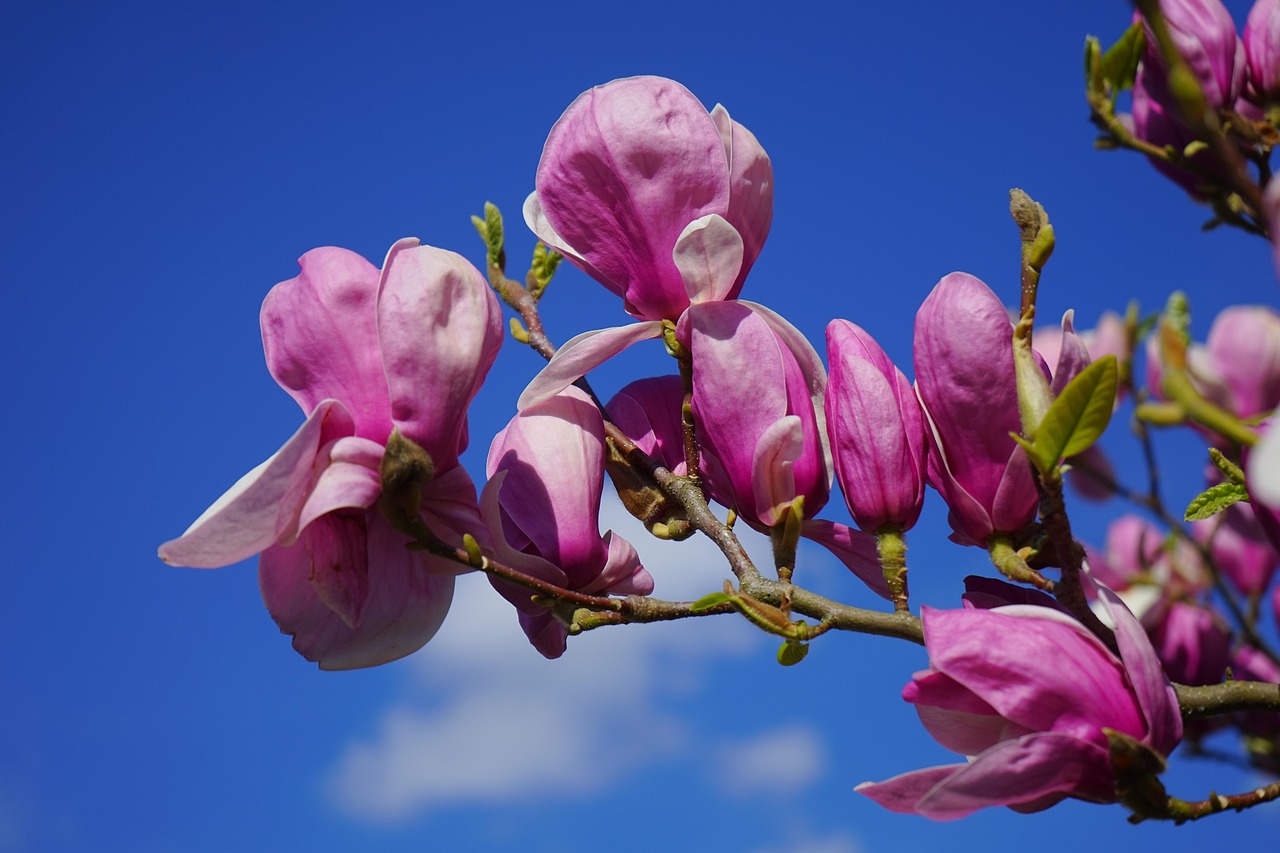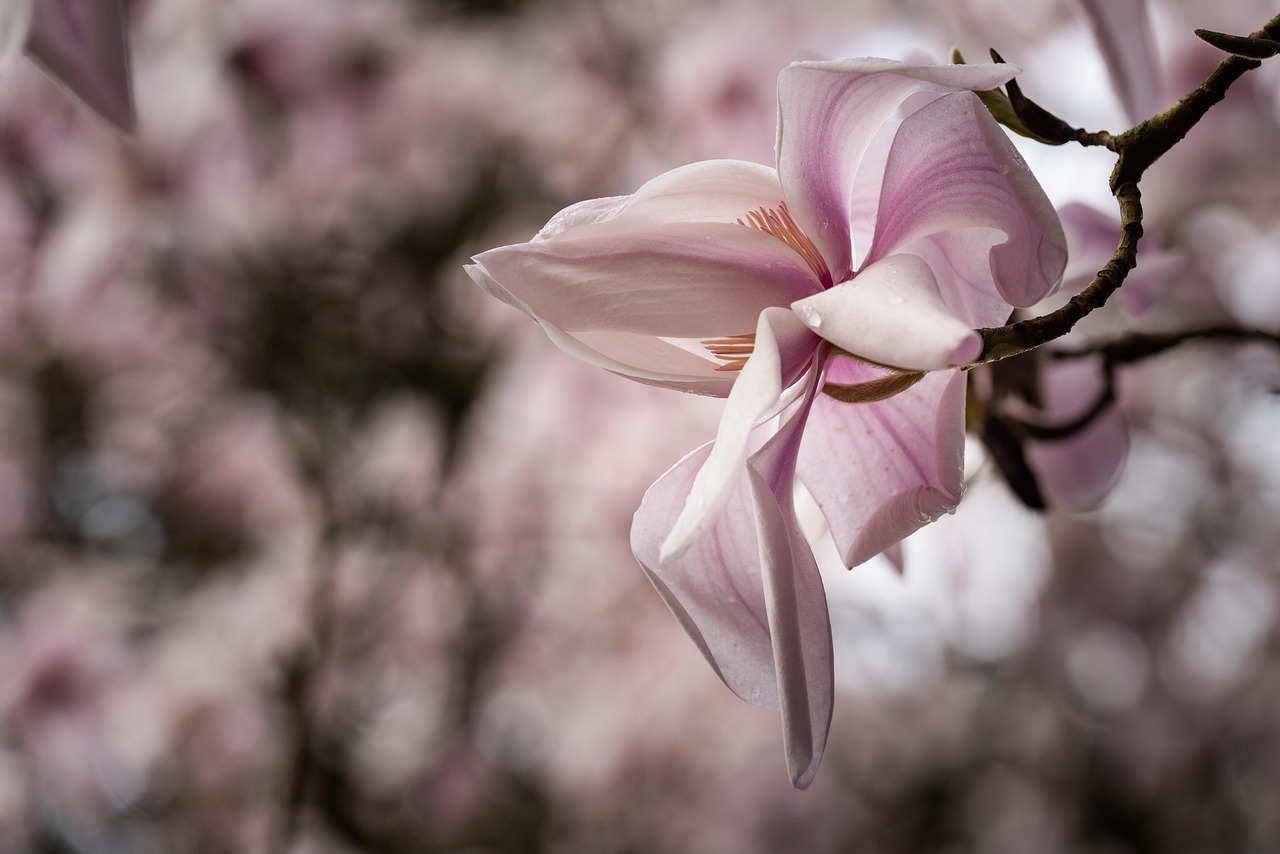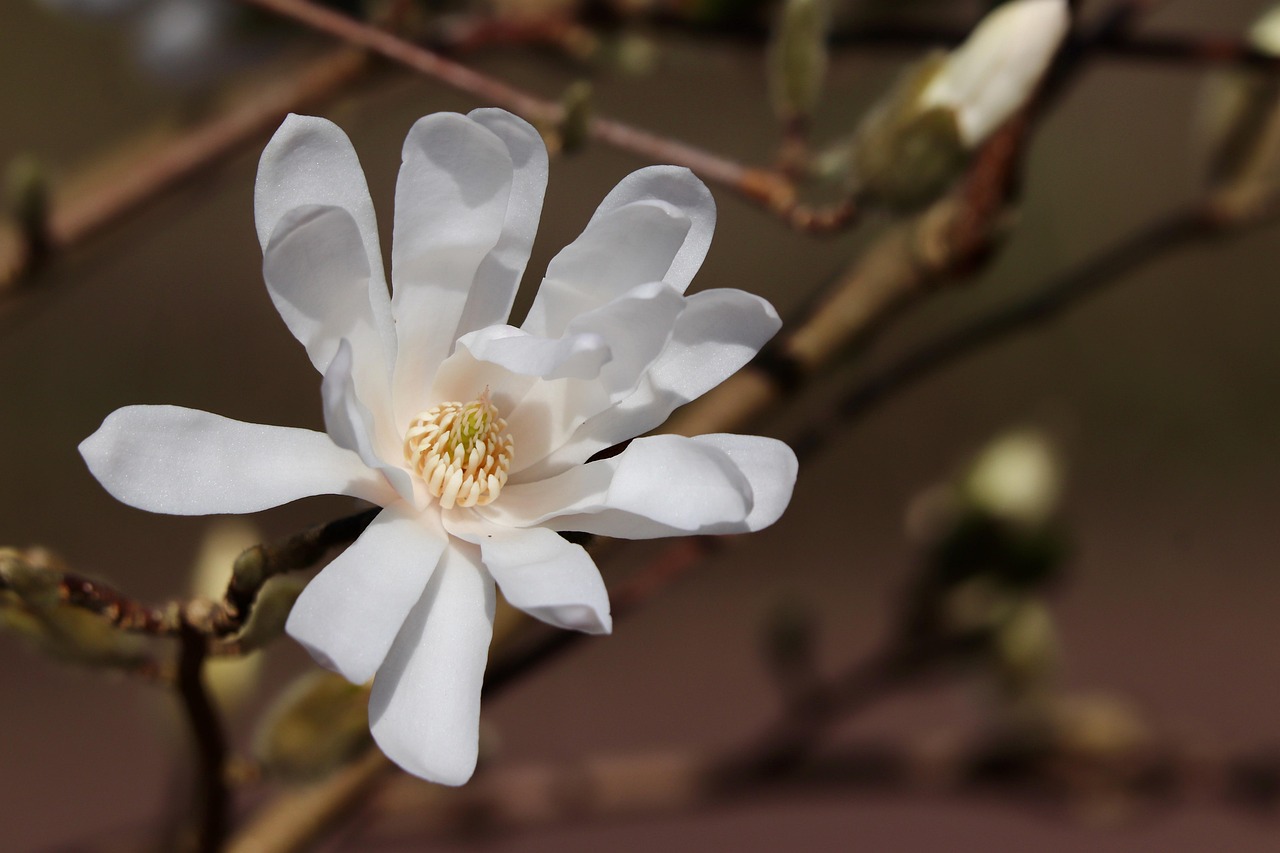The Southern Magnolia tree (Magnolia grandiflora) typically grows at a moderate rate of about 1 to 2 feet per year, reaching heights of 60 to 80 feet at maturity. This growth rate contributes to its ability to produce large, fragrant flowers during the summer months.
Understanding the Southern Magnolia Tree
The Southern Magnolia is a popular evergreen tree celebrated for its stunning, fragrant flowers and glossy green leaves. Native to the southeastern United States, it thrives in warm climates and is often used as an ornamental tree in gardens and landscapes. The tree’s beauty and fragrance make it a favorite among homeowners and landscape designers alike.

Southern Magnolias are known for their impressive size and longevity. They can live for over a hundred years, often becoming a central feature in the landscape. The tree’s ability to produce large, creamy white flowers, which can measure up to 12 inches across, adds to its appeal. These flowers not only provide visual beauty but also emit a delightful fragrance that can fill the air during their blooming season.
Growth Rate Factors
The growth rate of the Southern Magnolia tree is influenced by several factors, including soil quality, climate, and care practices. Understanding these factors can help gardeners optimize growth conditions and enjoy the beautiful flowers sooner.
- Soil Quality: Good drainage and nutrient-rich soil are essential for healthy growth. Southern Magnolias prefer slightly acidic to neutral pH levels.
- Climate: These trees thrive in USDA hardiness zones 7-10. They require warm temperatures and cannot tolerate prolonged frost.
- Watering: Regular watering during dry spells promotes faster growth. However, overwatering can lead to root rot.
- Fertilization: Applying balanced fertilizers in the spring can enhance growth rates and flowering.
Typical Growth Patterns
The Southern Magnolia has a distinctive growth pattern characterized by a pyramidal shape when young, which gradually becomes more rounded as the tree matures. It typically reaches a height of 60 to 80 feet and can spread wide, with a canopy that often exceeds 30 feet in diameter.

During its early years, the Southern Magnolia will focus on establishing a strong root system. This is when it experiences its most rapid growth. After about five years, growth rates tend to stabilize, averaging around 1 to 2 feet per year. It is crucial to provide adequate space for the tree to grow; crowded conditions can hinder its development.
Flowering Timeline
One of the most anticipated aspects of the Southern Magnolia is its flowering season. The tree typically begins to produce flowers after it reaches maturity at about 10 to 15 years old. The blooming period usually starts in late spring and continues into summer, providing an extended display of beautiful blossoms.
| Age (Years) | Height (Feet) | Flowering Potential |
|---|---|---|
| 1-5 | 5-10 | No Flowers |
| 6-10 | 10-20 | Possible Early Blooms |
| 11-15 | 20-40 | Regular Blooms Begin |
| 16+ | 40-80 | Abundant Blooms |
Growing a Southern Magnolia is rewarding, especially when the trees start to flower. With proper care, these trees can flourish and provide beauty and fragrance for generations. The initial years may require patience as they establish themselves, but the eventual payoff is well worth the wait.

Planting and Caring for Southern Magnolia Trees
Successfully growing a Southern Magnolia requires careful attention to planting and ongoing care. Understanding the specific needs of this tree can help ensure vigorous growth and abundant flowering. Proper planting and maintenance practices can significantly influence how fast the tree matures and how well it blooms.
Choosing the Right Location
When selecting a site for planting a Southern Magnolia, consider the following factors:
- Sunlight: Southern Magnolias thrive in full sun to partial shade. Ideally, they should receive at least six hours of direct sunlight each day.
- Space: Ensure there is enough room for the tree to grow both upward and outward. A distance of at least 15 to 20 feet from structures or other trees is recommended.
- Soil Type: Well-draining soil is crucial. Sandy loam or clay loam soils that retain some moisture but also drain well are ideal.
Planting Steps
Planting a Southern Magnolia correctly sets the foundation for healthy growth. Follow these steps for successful planting:
- Digging the Hole: Dig a hole that is twice as wide as the root ball and just as deep. This allows the roots to spread easily.
- Preparing the Soil: Mix native soil with compost to enhance drainage and nutrients.
- Placing the Tree: Position the tree in the center of the hole, ensuring that the top of the root ball is level with or slightly above the surrounding soil.
- Backfilling: Fill in around the root ball with soil mixture, gently tamping it down to eliminate air pockets.
- Watering: Water thoroughly after planting. This helps settle the soil around the roots.
Watering and Fertilization
A consistent watering schedule is essential for young Southern Magnolias. During their first few years, trees need regular moisture, especially during dry spells.

Watering Guidelines
The following guidelines can help maintain proper moisture levels:
- Frequency: Water deeply once a week during dry periods. Young trees may require more frequent watering.
- Method: Use a soaker hose or drip irrigation to deliver water directly to the roots without wetting the leaves, which can lead to fungal diseases.
Fertilization Schedule
Fertilizing Southern Magnolias can support their growth and flowering:
- Type of Fertilizer: Use a slow-release, balanced fertilizer with an N-P-K ratio of 10-10-10 or similar.
- Timing: Apply fertilizer in early spring as new growth begins, and again in mid-summer if necessary.
Pest and Disease Management
While Southern Magnolias are generally hardy, they can be susceptible to certain pests and diseases. Awareness of these potential issues can help maintain tree health.
Pests to Watch For
Common pests include:
- Aphids: These small insects can cause leaf curling and yellowing. They can often be managed with insecticidal soap.
- Scale Insects: These pests appear as small bumps on leaves and branches. Regular inspection and treatment with horticultural oil can help control them.
Diseases
Disease management is equally important. Some common diseases affecting Southern Magnolias include:
- Canker: A fungal disease that causes dieback of branches. Prune affected areas promptly to prevent spread.
- Leaf Spot: Fungal infections that create spots on leaves. Improve air circulation around the tree and avoid overhead watering to minimize occurrence.
Pruning Techniques
Proper pruning is essential for maintaining the shape and health of a Southern Magnolia. Pruning helps remove dead or diseased branches and promotes better airflow.
When to Prune
The best time to prune is during late winter or early spring before new growth starts. Avoid pruning in late summer or fall, as this can stimulate new growth that may not harden off before winter.
Pruning Steps
- Assess the Tree: Identify any dead, damaged, or crossing branches that need removal.
- Use Clean Tools: Make sure to use sharp, clean pruning shears to prevent transmitting diseases.
- Make Cuts: Cut branches at a slight angle, just above a bud or lateral branch, to promote healthy regrowth.
With careful attention to planting, care, pest management, and pruning, Southern Magnolias can grow into magnificent trees that provide beauty and fragrance for many years. Proper care ensures that these trees reach their full potential, both in size and in their stunning floral displays.
Common Varieties of Southern Magnolia
While the Southern Magnolia (Magnolia grandiflora) is the most recognized species, there are several notable varieties that exhibit diverse characteristics. Each variety may differ in growth habit, flower size, and foliage, making them suitable for different landscaping needs.
Popular Varieties
Here are some popular varieties of Southern Magnolia:
- ‘Bracken’s Brown Beauty’: This variety is known for its cold tolerance and smaller size, reaching about 30 to 40 feet. It features glossy, dark green leaves and large flowers with a rich fragrance.
- ‘Little Gem’: A dwarf variety that grows to about 15 to 20 feet tall. It has a compact form and produces smaller flowers but still offers the same delightful fragrance.
- ‘Alta’: This variety has a more upright growth habit, reaching heights of 40 to 50 feet. It is known for its dense foliage and large, fragrant blooms.
- ‘Southern Charm’: A hybrid that combines traits from various magnolia species. It offers a unique appearance with larger flowers and a more robust growth rate.
Environmental Impact and Benefits
Southern Magnolias are not just beautiful; they also provide numerous environmental benefits. Understanding these advantages can enhance appreciation for these magnificent trees.
Ecological Contributions
Southern Magnolias play a significant role in their ecosystems:
- Wildlife Habitat: The dense foliage offers shelter and nesting sites for various birds and small animals. The flowers attract pollinators like bees and butterflies.
- Air Quality Improvement: Like all trees, Southern Magnolias improve air quality by absorbing carbon dioxide and releasing oxygen. Their large leaves can also trap dust and pollutants.
- Soil Erosion Control: The extensive root system of Southern Magnolias helps stabilize the soil, reducing erosion in areas prone to runoff.
Aesthetic Appeal
The visual impact of Southern Magnolias is undeniable:
- Year-Round Interest: With evergreen leaves, these trees maintain their beauty throughout the year, providing a lush backdrop even in winter.
- Fragrant Blooms: The large white flowers are not only stunning but also fill the air with a sweet fragrance during the summer months.
- Landscaping Versatility: Southern Magnolias can be used as focal points in gardens, privacy screens, or shade trees due to their size and shape.
Cultural Significance
The Southern Magnolia holds significant cultural value, particularly in the southern United States. It has become an emblem of the region’s charm and beauty.
Historical Context
This tree has deep roots in American history:
- Cultural Symbol: The Southern Magnolia is often associated with southern hospitality and grace. Its presence is seen in many gardens and public spaces across the region.
- State Tree: In Mississippi, the Southern Magnolia is designated as the state tree, reflecting its importance to the local heritage.
- Literary References: The tree has been featured in various literary works, symbolizing strength, beauty, and resilience.
Modern Usage
Today, the Southern Magnolia continues to be celebrated:
- Landscape Design: Its striking appearance makes it a popular choice for both residential and commercial landscaping projects.
- Cultural Events: Many festivals and events in the southern United States celebrate this tree, showcasing its beauty and significance.
Caring for Southern Magnolia in Different Climates
Southern Magnolias thrive best in warm climates but can be grown in varying conditions with proper care. Understanding how to adapt care practices for different climates can enhance their growth potential.
Tropical and Subtropical Climates
In tropical or subtropical regions, Southern Magnolias can grow vigorously:
- Mild Winters: These areas typically allow for year-round growth without the threat of frost. Ensure consistent watering during dry spells to promote healthy development.
- Pest Management: Higher humidity can increase pest populations. Regular monitoring and proactive treatments can help maintain tree health.
Temperate Climates
In temperate regions, special considerations are necessary:
- Winter Protection: Young trees may need protection from frost. Mulching around the base can help retain warmth in colder months.
- Disease Prevention: Ensure good air circulation to prevent fungal diseases during wet seasons. Pruning should be done carefully to enhance airflow.
The Southern Magnolia is not only a beautiful addition to any landscape but also brings ecological benefits, cultural significance, and requires thoughtful care tailored to its growing conditions. By understanding its needs and characteristics, gardeners can cultivate these magnificent trees effectively.
Additional Considerations for Southern Magnolia Cultivation
In addition to the previously discussed aspects of growing Southern Magnolias, several other considerations can aid in their successful cultivation. These factors can further enhance growth rates, flowering, and overall tree health.
Mulching
Applying mulch around the base of the Southern Magnolia is beneficial for several reasons:
- Moisture Retention: Mulch helps retain soil moisture, reducing the need for frequent watering.
- Temperature Regulation: A layer of mulch can moderate soil temperature, protecting roots from extreme heat or cold.
- Weed Suppression: Mulching minimizes competition from weeds, which can steal nutrients and moisture from the tree.
Companion Planting
Choosing appropriate companion plants can enhance the beauty of the landscape around Southern Magnolias. Some suitable options include:
- Azaleas: Their colorful blooms can complement the white flowers of the magnolia, creating a stunning display in spring.
- Ferns: Planting ferns beneath the magnolia can provide texture and contrast while thriving in the shade created by the tree’s canopy.
- Camellias: These evergreen shrubs bloom in winter and early spring, providing year-round interest alongside the magnolia.
Seasonal Care Tasks
Adopting a seasonal care routine can help keep Southern Magnolias healthy throughout the year. Key tasks include:
- Spring: Fertilize as new growth begins. Check for pests and prune any dead or diseased branches.
- Summer: Monitor water levels, especially during hot spells. Keep an eye on pest populations.
- Fall: Rake fallen leaves and debris to prevent fungal diseases. Consider applying mulch before winter.
- Winter: Inspect the tree for any signs of damage. Provide protection against severe cold if necessary.
Common Misconceptions About Southern Magnolias
Despite their popularity, there are some misconceptions about Southern Magnolias that may deter potential growers. It is essential to clarify these misunderstandings:
- They Require Constant Care: While they do benefit from regular maintenance, once established, Southern Magnolias are relatively low maintenance and can thrive with minimal intervention.
- They Are Only Suitable for Large Yards: Smaller varieties like ‘Little Gem’ are perfect for compact spaces, making them versatile for various landscape sizes.
- They Are Not Cold-Hardy: Some varieties show remarkable cold resistance and can thrive in temperate climates with proper care.
Final Thoughts
The Southern Magnolia tree stands out as a symbol of beauty and grace in gardens and landscapes. With its moderate growth rate and stunning fragrant flowers, it captures the hearts of many gardeners. Understanding the specific needs for planting, care, and maintenance is crucial for maximizing its potential.
This tree not only enhances aesthetic appeal but also provides environmental benefits, such as improving air quality and offering wildlife habitats. The cultural significance of Southern Magnolias further adds to their charm, making them cherished components of southern heritage.
By following best practices for care and addressing common concerns, anyone can successfully grow a Southern Magnolia. Whether you have a sprawling estate or a small garden, there is likely a variety suited to your needs. With patience and dedication, you can enjoy the magnificent blooms and lush foliage of this iconic tree for generations to come.
The journey of growing a Southern Magnolia is not just about nurturing a tree; it is about cultivating beauty, enriching the environment, and embracing a piece of history that continues to flourish in modern landscapes.
